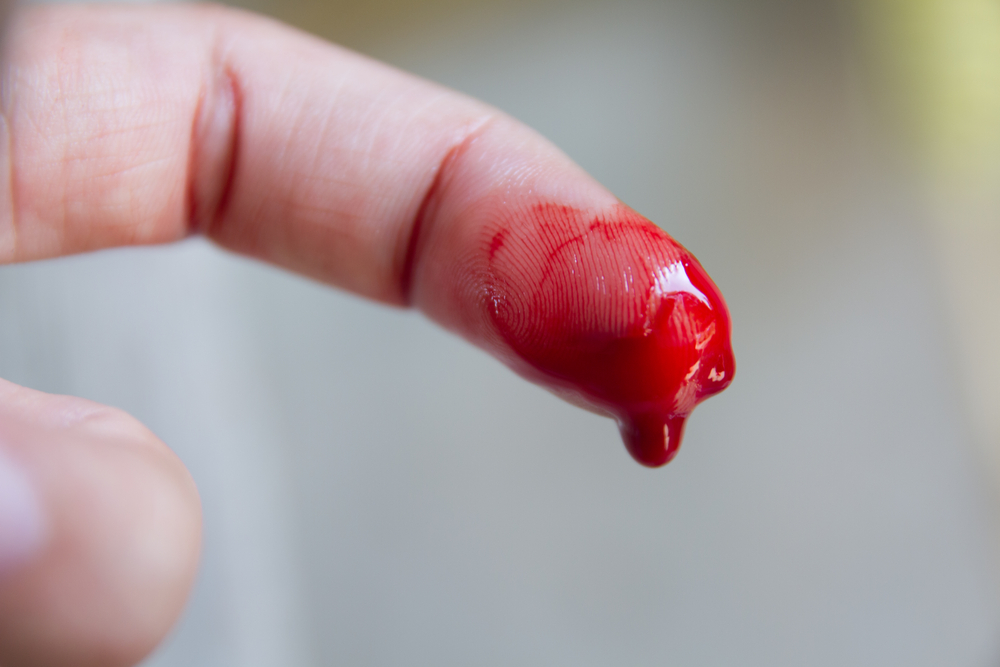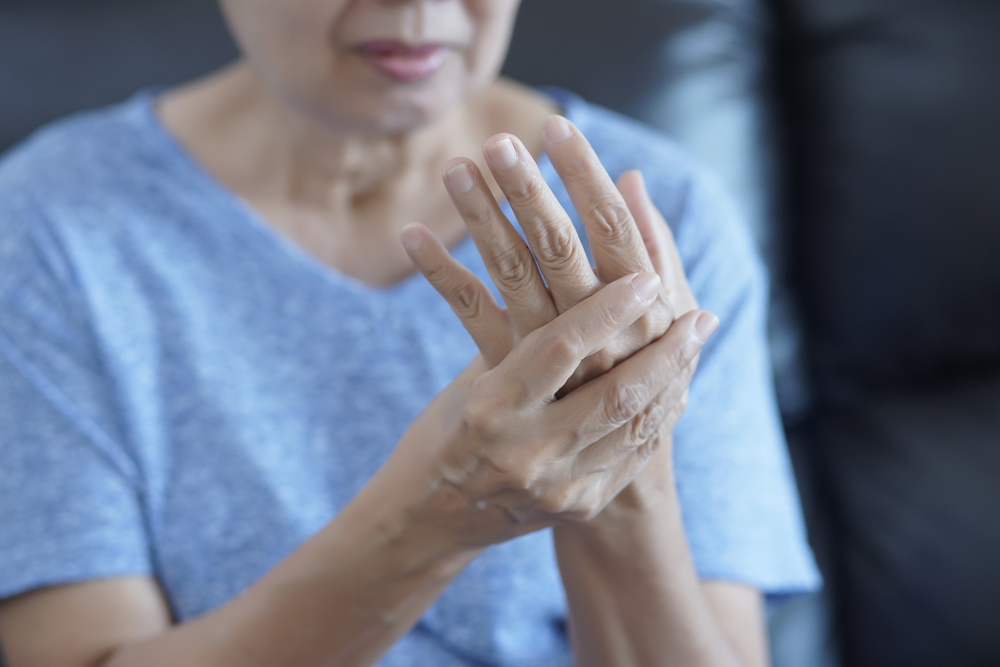- Palmar erythema is rare skin condition that affects the palms and fingers.
- It is generally associated with liver cirrhosis, but can also be hereditary or result from hormonal changes during pregnancy.
- Certain medications may also cause red palms, especially in people with impaired liver function.
Palmar erythema — also known as red palm disease — is characterized by reddish, blotchy skin around the palms and fingers. While the condition itself causes no pain or discomfort, it can be an indicator of more serious health concerns.
Telltale Signs of Palmar Erythema
Palmar erythema is a rare skin condition where the palms of both hands turn red – most commonly at the base of the thumb and little fingers. Sometimes, the fingers themselves may also be affected. The exact cause is unknown, but researchers believe that it may be caused by blood vessels at the base of the hand dilating due to changes in hormone balance.
Redness may be accompanied by warmth but the affected skin should not itch, scale or thicken. There may be some dryness that can be countered with moisturizing lotions. Applying pressure or pressing firmly on affected areas should not cause any pain, but the skin should blanch or turn briefly from red to pale red or white.
Note that the degree of redness may vary according to emotional state, hand elevation, temperature or pressure on the palm.
The specific symptoms of palmar erythema are:
- Symmetrical spread affecting both hands
- No excessive sweatiness of the palms
- No abnormal thickening of the skin
- May be slightly warm or dry to the touch
- Absence of pain, itchiness, numbness and tingling
- Skin blanches when pressed or turns from red to pale red or white
Medical Assessments and Diagnosis
Although palmar erythema can be recognized on sight, the doctor may want to rule out certain underlying conditions. After reviewing medical and family histories and performing a physical exam, your specialist may order additional diagnostic tests, including bloodwork and imaging studies.
Unless palmar erythema or red palms have been present since birth as part of a rare inherited condition, it may herald an underlying illness that needs to be ruled out.
Palmar erythema may also be mistaken for other rashes:
- Itchy skin conditions like atopic dermatitis, eczema and psoriasis
- Rocky Mountain Spotted Fever, a tick-borne disease
- Coxsackievirus, causing hand-foot-mouth disease
- Syphilis, a sexually transmitted disease
Dr. Rhoda Klein, a board-certified dermatologist and founder of Pure Bioderm, says that “After taking a thorough history and reviewing a patient’s medications, the cause of the palmar erythema is often obvious. However, blood tests like complete blood counts, thyroid hormone, pregnancy hormone, and liver function tests may be useful to determine what might be causing the palmar erythema.”
Types of Palmar Erythema
There are several types of palmar erythema, and each one develops due to various different root causes.
The most common types are:
- Hereditary palmar erythema, which is extremely rare. The redness here comes from dilated blood vessels under the skin that appears at birth and remains for life. Only a few cases have been described in medical literature.
- Pregnancy-related palmar erythema occurs in about 30% of pregnancies. This type may be due to blood vessel changes related to increased estrogen levels.
- Idiopathic palmar erythema is diagnosed in a few cases when no underlying cause is identified. This is a diagnosis of exclusion, meaning that other underlying causes must be ruled out.
- Secondary palmar erythema is a symptom of many different underlying medical conditions – most commonly cirrhosis of the liver. This condition is one in which the liver no longer functions properly due to long-term damage. About 1 in 4 patients with liver cirrhosis experience palmar erythema.
What Causes Red Palms?
There can be several underlying medical conditions tied to red palms, ranging from autoimmune diseases to hormonal changes that come with pregnancy.
Chronic Illnesses
In less common instances, Wilson’s disease – a rare genetic disorder in which the liver cannot filter out excess copper in the body – may be the underlying culprit. In this disease, copper builds up in organs, such as the liver, brain and eyes.
Other conditions that could cause red palms include hemochromatosis, where excess iron builds up in tissues and organs; autoimmune diseases, such as rheumatoid arthritis (about 60% of these patients are affected); thyroid disease (about 18% of people with elevated thyroid hormone levels have red palms); and HIV infection.
Much less common is palmar erythema in diabetes, where about 4% of patients are affected. Surprisingly, brain tumors, especially malignant and metastatic lesions, may be behind red palms. It may also rarely be associated with Chronic Obstructive Pulmonary Disease. In rare instances, red palms may be associated with chronic mercury poisoning, also known as acrodynia.
Medications
Palmar erythema can appear as a side effect of certain medications, such as topiramate (Topamax), which is often taken in combination with other drugs to treat seizures, epilepsy or migraines. It has also been found in patients taking Albuterol (Ventolin, ProAir, or Proventil), a drug used to treat asthma or bronchospasm. Medications prescribed to treat liver impairement may also cause palmar erythema.
Liver Cirrhosis
The most common and serious underlying cause of palmar erythema is liver cirrhosis, which is caused by excessive drinking and smoking — so common in fact that palmar erythema was given the nickname “liver palms.” As such, red palms could serve as an early warning sign of liver trouble.
Cirrhosis is scarring of the liver as it tries to repair itself from injuries from chronic alcoholism or hepatitis. The more scar tissue that forms, the more difficult it is for the liver to carry out its many functions.
Although the mechanism that causes the redness is not fully understood, the hormone estrogen or nitrous oxide in the blood play a role in dilating small blood vessels in the palms. This effect occurs particularly in the fleshy parts of the palm below the thumb and the pinkie finger.
Pregnancy
The body undergoes many changes during pregnancy, including dramatic and temporary changes to the mother’s circulatory system to accommodate blood flow to the womb. This usually increases total body blood flow by 50%.
During the second trimester, the hormone estrogen plays a major role in milk duct development that enlarges the breasts. Some believe the elevated estrogen in pregnancy plays a role in causing the hands to appear red. Liver function tests will appear normal during routine pregnancy blood work in these cases.
Treatments for Red Palms
There are no specific treatments available to reduce the redness of palmar erythema. As mentioned, hereditary palmar erythema lasts throughout a lifetime. On the other hand, pregnancy-related palmar erythema usually resolves after delivery.
If there is an underlying condition like liver cirrhosis or autoimmune disease, treatment of the underlying condition may improve symptoms. If a prescription medication is the culprit, then stopping the medication with a doctor’s approval may resolve this condition.









